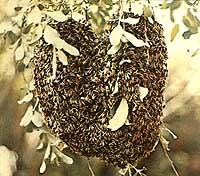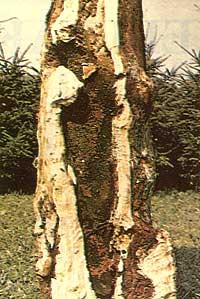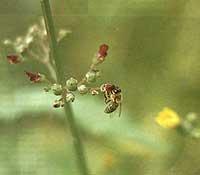The bee, how does the hive do?

Bees hives appeared in the tropical zone. And currently there are still two of the four species that survive: Apis flora and Apis dorsata. The other two, Apis cerana and Apis mellifera, slowly expanded to the north and south of the equator. Therefore, they were forced to overcome the discontent of the winter: they were free of feeding pollen and nectars and had a cold temperature during that season.
The method that these bees have developed to last consists in the choice of the type of cabin for the installation of the colony. If it is well chosen, the colony will live years. Otherwise, they will end when the cold reaches the first winter. The suitability of the place of life is based on the ability of older bees, which are the ones they select.
New colonies new colonies
The method followed by bees in the formation of the new colony is called beekeeping. Bees form the beekeeper at the end of the spring. Due to a period of proliferation, the beehive population increases considerably, which entails the saturation of the shelter. Consequently, a beehive is formed.
It seems that this superpopulation brings the putting of the daughters of the queen. The strongest queen inherits an already built hive. To decide first that they usually have is the fight of puyas among the young queen. When the setting of the new queen is advanced, and the first queen, almost before the birth of her daughter, has gone with a colony of approximately 30,000 working bees, with the aim of consolidating a new colony in a new shelter.

The old queen, with the entourage behind, moves away from the hive in a crazy flight. After a dozen meters, the beekeeper is placed on the branch of a tree or grove, forming a lot in the form of beard. Before time, explorers leave in all directions in search of the new shelter. This exploration flight does not reach more than 10 km. The exploratory bees are the oldest of the beehive (previously they collected food for the beehive) and therefore, those that know the landscape of the environment. Only 5% of the beekeeper.
Once chosen the new location of the beehive, from one side to the other of the beehive begin to fly in the form of zigzag, drawing with the wings very varied sounds. In this way, they indicate to the other bees that they can break the pile. Bernd Heinrich, of the University of Vermont itself, has shown that, before the entire beehive population begins to fly, the temperature of the whole increases to 36°C (the ideal temperature for the op- time function of the southern muscles).
Then, the explorers are located around the hive and try to open the way through the whole, vibrating the wings. From the pilo a noisy bustle is formed that will give rise to climax by melting the firm surface of the hive and dismantling chains formed by bees. Immediately, the whole beekeeper starts flying, filling the air with a penetrating jet and thousands of bees spread on a nervous flight.
Bee cloud of 10 meters
The beehive then forms a fog of 10 m of diameter. To guide hives towards the new shelter, the scouting bees penetrate the hive, making lines that mark the direction of the place chosen occasionally. At first the beekeeper goes slowly, walking slowly in the first 30 meters, but after about 200 m it is accelerating, reaching a few meters of the ground a speed equal to or greater than 10 km/h.

As the beekeeper approaches the point where the hive will be, the beehive bees tell them to stay. The bees will fall by the fog then formed and placed at the entrance of the cabin (trunk pit, cavity between roots or some branch). From the Nassanoff gland, located in the lower abdomen, a congregational ferormona will be released.
This ferormona is a chemical signal that marks the entrance of the hive, detected by bees as smell. This signal will cause all bees to gather around the cavity. Half an hour later, all the components of the beehive are exempt in the new house. Before many hours of cleaning pass, you will begin to build honeycomb or collect pollen and nectare. The new colony has been consolidated.
New colonies in danger
The foundation of the hive has many risks. To spend the first black winter, the colony has to overcome a series of obstacles: to look for an ideal place, to build a hive of wax honeycomb, with a great energy expense, to care for young people to spend the winter and to accumulate the necessary supplies for a hard time. Most of the colonies will not achieve it. After a long study of the colonies that inhabit the forests of the area of Ithaca (USA), it can be affirmed that the colonies of recent construction exceed 24% of the first cold winter.

As for those already consolidated, the rate of permanence was 78%. Likewise, it has been shown that if a colony exceeds the first winter, the most critical, it can overcome another five. Therefore, a colony can live a lot, but it is with great dangers when choosing the new place, so the beekeeper can not fail to find the new place. Each colony must make a unique and serious decision to live for several years.





